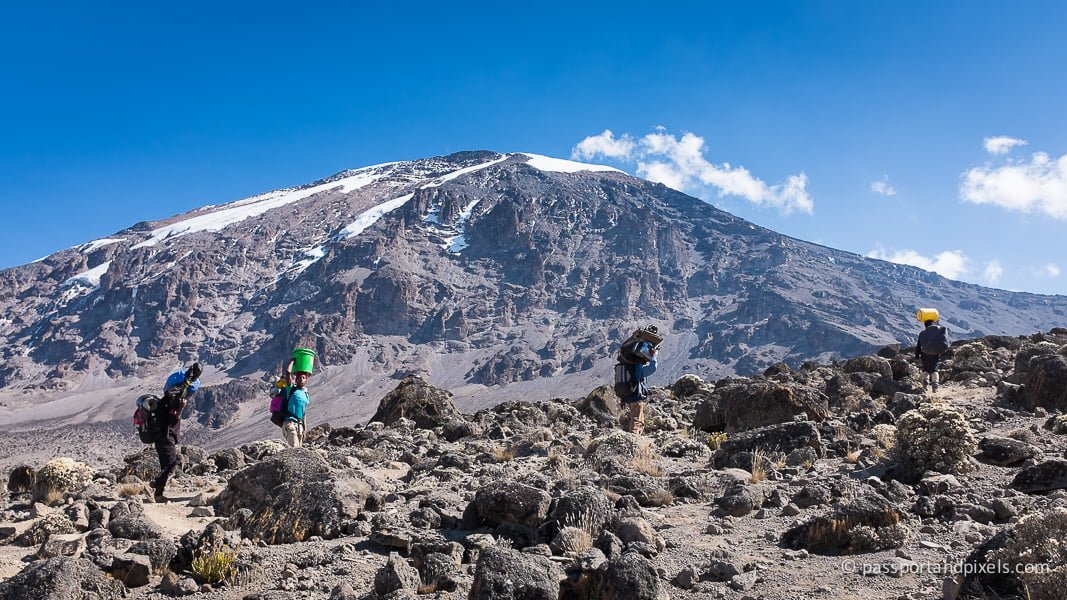Trekking Kilimanjaro, what you need to know
- Home
- Trekking Kilimanjaro, what you need to know



Over the past century, “Kili” has become a popular destination for globetrotting peak-baggers and adventure-seekers of all stripes—partially because it is so accessible. Most climbers reach the summit with no more gear than appropriate clothing, hiking boots, and willpower. Nonetheless, the tallest freestanding peak in the world is nothing to scoff at.
Here are few things you can do to prepare for climbing Mount Kilimanjaro
For various economic and ecological reasons, the Tanzanian government stipulates that you must hire a local guide outfitter to climb Kilimanjaro. Most climbers opt for an all-inclusive tour operator that provides tents, food, transportation, and porter services throughout their entire stay in the country.
There are seven established climbing routes to the summit, but most visitors pick among three. The Marangu Route takes five to six days and is the quickest, cheapest, and most comfortable. The Machame Route charges up the southern flank of the peak in six to seven days and is tough going. The Lemosho Route is a scenic journey up the long western ridge of the mountain, lasting from six to nine days. The more days you spend on the mountain, the more expensive the trip. However, unless you are very confident in your performance at altitude, play it safe and book one of the longer tours to give yourself time to acclimatize. The success rate for climbers who attempt a five-day ascent is less than half.
Even without discussing flights, climbing Kilimanjaro is an expensive expedition. Tour package prices vary among routes and companies, but you won’t find a much cheaper deal than $1,000—and it’s not uncommon to shell out as much as $3,000. You’ll also need to secure lodging in a nearby town for before and after the trek. If you add on a safari, that’s another few thousand bucks. Remember to change spending money into Tanzanian shillings
It’s expected, and everyone does it. Bring $400–$500 cash and tip all of the guides and porters at the end of the climb. Tanzanians come from all over the country to work on the mountain and use these wages to support their families.
For an extra $100 or so, you can ensure your camp is outfitted with a zippered, waterproof, and portable bathroom tent, a convenience that the guides and porters jokingly call the “Bank of America.” Otherwise, you are stuck with the scant shelter of volcanic outcroppings, and the old hole-in-the-floor wooden outhouses that are scattered around each trail camp. You don’t absolutely need the Bank of America—but you’ll be glad to have it, especially if your party is caught in the rain or snow.
Kilimanjaro may be one of the world’s most accessible high peaks, but summiting a 19,000-foot mountain is still no easy feat. Hydration is key, so carry two or three one-liter reusable water bottles. Bring a light inflatable sleeping pad and a sleeping bag rated for 0 to 10° Fahrenheit. Pack thermal leggings, warm fleece pants, and lightweight, quick-drying hiking pants. Include sunglasses, a warm head cover, and a sun-shading hat. Perhaps most importantly, bring a good pair of waterproof hiking boots and carry a fresh pair of socks for each day on the mountain. Many hikers also opt for poles because the terrain is rocky and steep.
The lowland jungle is rife with mosquitoes; the altitude can make you dizzy; and the unfamiliar bacteria can wreak havoc upon your immune system. Bring bug repellent and antimalarial pills. Use Dramamine and ibuprofen to stave off the effects of the altitude. Carry Pepto-Bismol in case of traveler’s diarrhea. Also make sure you bring a tube of high-SPF sunscreen and any specialized medication or toiletries you need; they may not be readily available in rural Tanzania.
Everyone responds differently to the altitude, but it’s wise to add an extra day or two to your trip so you don’t need to rush up the mountain. If you climb too quickly at high elevations, your body may have difficulty adjusting to the lower oxygen pressure. You risk altitude sickness, which can jeopardize your journey and even lead to death in severe cases. “Pole pole” (pronounced po-lay po-lay) is a Swahili phrase meaning “slowly slowly,” and you will hear these words repeated throughout your journey. While a good mountain guide will make sure you take your time, you should still stay aware of your own pace.
Guided tours make for a safer trek, but this is still a challenging endeavor that is not to be taken lightly. People do die on Mount Kilimanjaro every year. The way is arduous and steep, between four and 15 uphill miles each day, depending on the route. You will find that prolonged walking is more physically taxing at high altitude, and as you make your way across the exposed mountainside, you may encounter wind, rain, snow, and scorching sun. Only about 60 percent of climbers are able to successfully summit the peak. Proper preparation will help ensure that you are one of them.